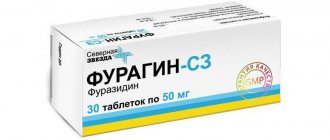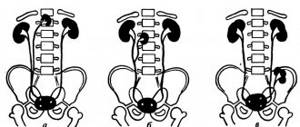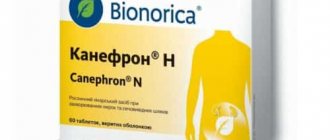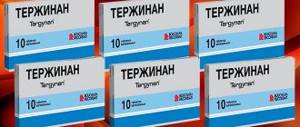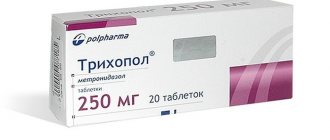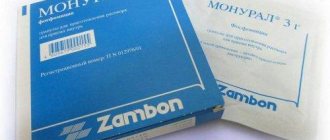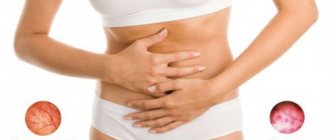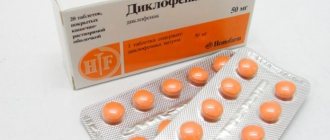Composition and release form
Norbactin is produced in the form of round white tablets with engraving. The drug is distributed into blisters of 10 pieces. in everyone. 1 or 2 blisters are packed in 1 cardboard box, instructions for use are included. Norbactin is intended for oral administration as a full course. The therapeutic effect of the drug is provided by the active substances and their interaction in the chemical composition:
| Active ingredient | Excipients | Shell composition |
| norfloxacin | Magnesium stearate | titanium dioxide |
| sodium lauryl sulfate | hypromellose | |
| purified talc | Macrogol 400 | |
| corn starch | purified water | |
| colloidal silicon dioxide | purified talc | |
| croscarmellose sodium | ||
| MCC |
Pharmacological properties
Norbactin is a medical drug from the pharmacological group of fluoroquinolones, which has a wide range of therapeutic activity against pathogenic flora. The tablets have a bactericidal effect: the component norfloxacin, after taking a single dose orally, penetrates through the blood to the pathogen cells, destroys and destroys DNA, thereby ensuring massive death of pathogenic flora. Staphylococci, streptococci, enterobacteria, shigella, salmonella, and klebsiella are sensitive to Norbactin. Enterococci are resistant to the therapeutic effects of norfloxacin.
According to the instructions, the medication is taken only on an empty stomach, otherwise the rate of absorption of the active substances is reduced. The maximum concentration in blood plasma is reached 1–2 hours after taking a single dose. The degree of protein binding when administered orally is 14%, bioavailability is 40%. The half-life is up to 6.5 hours. The drug is metabolized in the liver. Partially excreted in bile, the bulk in urine and feces.
Is Norbactin an antibiotic or not?
The chemical composition of this medication is a broad-spectrum antibiotic. Norbactin is active against most anaerobic and aerobic bacteria and a number of protozoa. Due to the systemic effect in the body, side effects affect important organs and systems. It is necessary to follow medical recommendations, otherwise the patient’s condition will worsen.
What kind of drug is this?
Norbactin is an antibacterial drug that is used for urological diseases. The main active ingredient is norfloxacin; it also contains excipients. Once in the body, the drug affects the bacterial enzyme DNA gyrase and destabilizes the DNA chain, which leads to the death of bacteria. The bactericidal effect occurs quite quickly.
The drug Norbactin
The drug affects not only most aerobic gram-negative microorganisms, but also some gram-positive ones.
The substance is well absorbed from the gastrointestinal tract. For better absorption, the drug must be taken on an empty stomach, since when taking tablets with food, their effectiveness is greatly reduced.
The maximum concentration of the drug occurs 1.5-2 hours after administration. The drug is partially processed in the liver, so some of the drug is excreted in the bile, but the majority is excreted in the urine and feces.
Indications for use of Norbactin
Tablets are prescribed after a preliminary assessment of the sensitivity of the infectious agent to Norfloxacin, otherwise there is no positive dynamics, and recovery is delayed. According to the instructions for use, medical indications:
- inflammatory process of the prostate in men;
- uncomplicated gonococcal infection;
- infections of the digestive, reproductive and urinary systems;
- "travelers' diarrhea";
- neuropathy (prevention of sepsis).
The instructions indicate diagnoses for which the use of Norbactin as part of complex treatment is appropriate. This:
- prostatitis;
- salmonellosis;
- cervicitis;
- endometritis;
- shigellosis.
Doctors' opinion
Most doctors use Norbactin in their clinical practice and leave positive reviews about it.
A disease such as cystitis significantly worsens the quality of human life. But if you select appropriate and effective medications for therapy, then the symptoms of the disease and its causes are eliminated within a week. Norbactin is one of the effective antibiotics that is used for bladder problems.
Vitaly Grigorievich, urologist
When treating urological diseases, I often prescribe this remedy to my patients, especially in the absence of complications. The drug is highly effective against many microbes that cause cystitis and urethritis.
Vyacheslav Nikolaevich, urologist
Norbactin has proven itself in the complex treatment of the urinary tract. Patients note its effectiveness, accessibility and quality. However, in some cases, adverse reactions may occur.
Olga Anatolyevna, therapist
This medication quickly relieves inflammation in the urinary organs. Effectively helps with urethritis, cystitis, pyelonephritis and nephrosis. It is an inexpensive medicine.
Natalya Sergeevna
I often prescribe Norbactin to my patients. It is a gentle antibiotic that effectively copes with diseases such as cystitis. In my practice, I have not observed any side effects from its use.
Ksenia Nikolaevna, urologist
Yes, the drug is really good and is well tolerated by patients. However, it is important to remember that self-medication and taking medications prescribed by a pharmacist are not recommended. The decision regarding the use of antibiotics should be made by an experienced doctor only after examining the patient.
Ruslana Vitalievna
In some cases, I prescribe these tablets for uncomplicated pyelonephritis. To achieve the desired effect from its use, Norbactin must be used in complex treatment.
Evgenia Pavlovna, nephrologist
Directions for use and dosage
According to the instructions, the drug Norbactin is intended for oral use. The tablets are taken on an empty stomach, not chewed beforehand, swallowed whole, and washed down with plenty of water. The course of treatment is 7–10 days. Daily doses depend on the diagnosis, characteristics of the body, and the age of the patient. The instructions describe how to take the medicine correctly:
- Norbactin for uncomplicated cystitis: drink 200–400 mg twice a day, treat for 1 week.
- Norbactin for pyelonephritis, urinary tract infections - 400 mg 2 times a day for a week.
- Uncomplicated gonococcal infection - 800 mg once.
- Infections of the gastrointestinal tract - 400 mg 3 times a day for a course of 5 days.
- Infection of the genital organs - 400–600 mg 2 times a day. for 7 days.
- Prevention of sepsis in neuropathy - 400 mg 3 times a day for a course of 8 weeks.
- Treatment of infectious diseases with liver and kidney failure - 200 mg three times a day.
Reviews
We have selected some reviews from people who have used the drug Norbactin:
- Margot. A couple of weeks ago I treated acute cystitis with such tablets. The pain when urinating quickly went away, but problems with stool (liquid feces) appeared. I constantly ran to the toilet, although I took the medicine on an empty stomach. When I could no longer tolerate it (on the 5th day of treatment), I had to change the drug and buy the safer Normax at the pharmacy.
- Andrey. This drug was prescribed to me by my personal nephrologist and told me to drink it twice a day after meals for seven days, don’t drink on an empty stomach - you can put an antibiotic in your stomach. After taking it, I began to experience mild headaches, my heart began to hurt, my urine took on a light appearance and began to foam. At night I couldn’t sleep for a long time, my lower back began to bother me. I think it’s the kidneys that are starting to make themselves known. A difficult drug for my body. The doctor said that this is a normal effect of the antibiotic. They all practically harm the body and at the same time it is simply impossible to begin treatment without them.
- Marina. I took the medicine for pyelonephritis for 10 days. The tablets quickly relieve pain and act gently - without side effects. Additionally, the doctor prescribed probiotics, vitamins and drugs to restore immunity. It helped me, so I can recommend it for urinary tract infections.
special instructions
Instructions for use of Norbactin indicate that for epilepsy, convulsive syndrome, liver and kidney failure, doctors individually adjust the daily dosage (halve). Other instructions for use of the medication:
- During treatment, the body's water balance is monitored and maintained.
- The medication is taken only on an empty stomach, otherwise the therapeutic effect weakens.
- Medicines with zinc, iron, magnesium, calcium or sucralfate are taken 2 hours or a couple of hours after the dose of Norbactin. The same applies to treating a patient with antacids.
- Taking the medication affects the psychomotor reactions of the body, so during treatment it is not recommended to drive a vehicle or perform work that requires concentration.
- The course of drug therapy varies between 10–14 days, no longer. If there is no positive dynamics on the third day of treatment, you need to consult a doctor and change the medication.
- If you have pain in the joints and tendons, you should immediately stop further taking this medication.
- To eliminate the possibility of photosensitivity, patients limit visits to the solarium during the period of drug therapy. Tanning caused by exposure to open sunlight is especially dangerous.
- The dye in the medication provokes severe bronchospasm in patients with a tendency to an allergic reaction.
Contraindications
Norbactin should not be taken throughout pregnancy, as the drug can have an adverse effect on the embryo, inhibiting the development and formation of its internal organs, ligaments and tendons. In addition, Norbactin has some other contraindications:
- Age up to 18 years.
- High sensitivity to antibiotic components.
- Epilepsy or tendency to seizures.
- Atherosclerosis and other cerebrovascular disorders.
During lactation, the drug can be used if feeding the baby is stopped for a while.
Drug interactions
According to the instructions, Norbactin tablets are often used as part of complex therapy. Doctors do not exclude the risk of drug interactions:
- Concomitant use with barbiturates or anesthetic drugs slows the heart rate and increases blood pressure.
- If you take Norfloxacin and anti-seizure drugs at the same time, epileptiform seizures develop.
- In combination with Warfarin, systematic monitoring of coagulation parameters is required.
- Norfloxacin reduces the clearance of Theophylline, increases plasma concentrations of Cyclosporine and indirect anticoagulants, and inhibits the therapeutic effect of nitrofurans.
- Antacids with magnesium or aluminum hydroxide, preparations with iron, sucralfate or zinc reduce the adsorption of Norfloxacin from the gastrointestinal tract (gastrointestinal tract).
Causes
The most common cause of cystitis in women is infectious pathogens, since the vagina, anus and wide urethra are very close to each other, which allows pathogenic microorganisms to easily enter the bladder through the ascending tract. There are other options for the penetration of harmful bacteria into the genitourinary system:
Side effects and overdose
The instructions for use of Norbactin say that at the beginning of the course the patient’s well-being may unexpectedly worsen. We are talking about the following side effects:
- from the central nervous system (central nervous system): headache, migraine, insomnia, dizziness, auditory and visual hallucinations, drowsiness;
- from the digestive system: pseudomembranous enterocolitis, diarrhea, nausea, heartburn, abdominal pain;
- from the urinary system: albuminuria, urethral bleeding, dysuria, urinary retention, polyuria, pyelonephritis;
- from the musculoskeletal system: arthralgia (acute joint pain), tendon ruptures;
- on the part of the skin: allergic reactions in the form of skin rash, urticaria, itching, swelling and redness of the epidermis;
- other: candidiasis, increased body temperature, bile retention, granulocytopenia.
If the prescribed daily dosage is regularly exceeded, the intensity of side effects increases. The patient complains of dizziness and nausea, constantly wants to sleep, and suffers from migraine attacks. To normalize the condition, you need to induce vomiting and take enterosorbents. Symptomatic treatment should be carried out at home. In the hospital, hydration therapy with forced diuresis is prescribed, and the patient is observed.
Analogs
If, when treating cystitis or another infectious disease, the medication is ineffective or causes side effects, you can choose a replacement. Norbactin analogues:
- Norfloxacin. For cystitis or urethritis, take 1 tablet. twice a day for a week. For gonorrhea, 1–2 tablets are prescribed. three times a day.
- Normax. The drug in tablet form is recommended for patients over 12 years of age; the method of administration and dosage are described in detail in the instructions.
Norbactin or Nolitsin - which is better?
The medications Norbactin and Nolitsin are analogues that have an identical principle of action in the affected body and the same chemical composition. The concentration of the active component in 1 tablet differs - 200 or 400 mg. There are minor differences in price. The medication Nolitsin costs the patient 100 rubles more. The final choice of medication remains with the specialist.
Norbactin price
The drug is sold in pharmacies. You can order it online at a discount and without leaving your home. The average price in Moscow is 200–300 rubles:
| Pharmacy name | Price, rubles |
| Rigla | 200 |
| Pharmacy IFC | 225 |
| EixirPharm | 240 |
| Online pharmacy "Dialogue" | 240 |
| ZdravZone | 260 |
| EuroPharm | 280 |
| Samson-Pharma | 330 |

